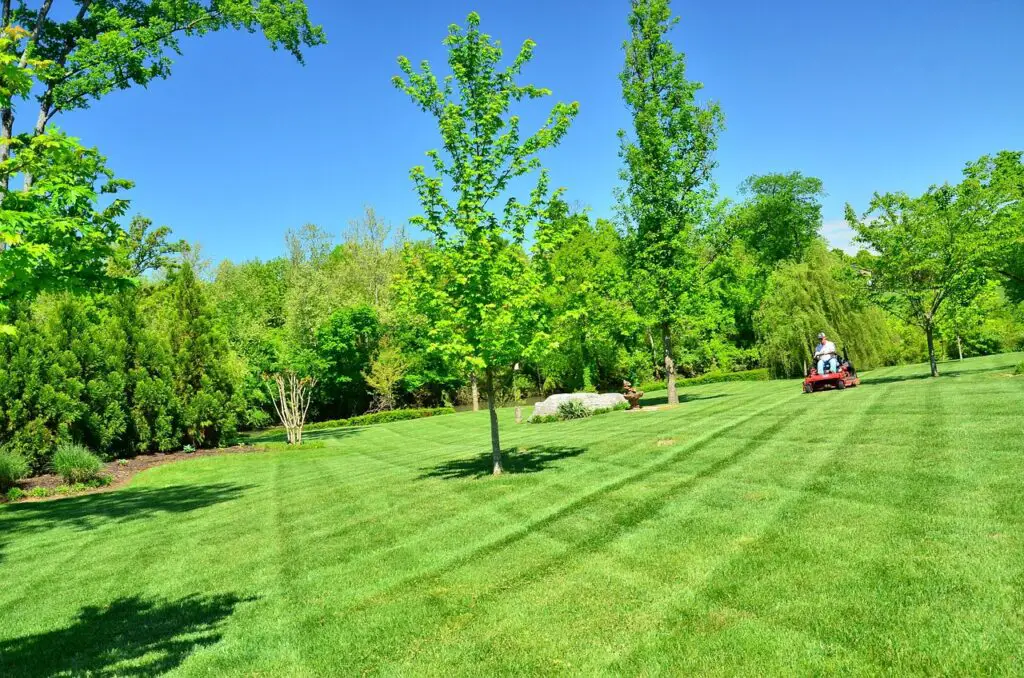Maintaining a healthy and lush lawn is the dream of every homeowner. But sometimes, despite our best efforts, lawn diseases can still occur, ruining our lawn’s beauty and vitality. The good news is that there are ways to prevent lawn diseases from happening. In this article, we’ll discuss the different ways to prevent lawn diseases and keep your lawn looking healthy and vibrant.

Understanding Lawn Diseases
Before we discuss how to prevent lawn diseases, it’s important to understand what they are and how they develop. Lawn diseases are caused by fungi, viruses, bacteria, and other pathogens that attack the grass, causing it to die or turn yellow. These pathogens can enter the lawn in various ways, such as through soil, seeds, or even from neighboring lawns.
Some common lawn diseases include brown patches, dollar spots, powdery mildew, and rust. These diseases are typically caused by different types of fungi, and they can manifest in different ways. For example, brown patches can cause circular patches of dead grass, while powdery mildew can cause a white, powdery film to form on the blades of grass.
Preventing Lawn Diseases
Preventing lawn diseases requires a combination of practices and strategies, including proper lawn care and maintenance, regular inspections, and timely treatments. Here are some ways to prevent lawn diseases:
- Choose the Right Grass
One of the best ways to prevent lawn diseases is to choose the right type of grass for your climate and soil conditions. Different types of grass have different disease resistance and tolerance levels. For example, fescue and ryegrass are more resistant to disease than Bermuda grass, but they require more water and maintenance.
Consult with a lawn care expert or local garden center to determine the best type of grass for your area. They can help you choose the right grass that’s resistant to common lawn diseases in your region.
- Proper Watering
Watering your lawn properly is essential to preventing lawn diseases. Overwatering or underwatering can weaken the grass, making it more susceptible to disease. Water your lawn deeply but infrequently to encourage deep root growth and reduce disease risks. Avoid watering in the evening or at night, as this can cause the grass to remain wet for longer periods, which can increase the chances of fungal growth.
- Mowing and Maintenance
Mowing your lawn at the right height can also help prevent lawn diseases. Cutting your grass too short can weaken it and make it more susceptible to diseases while cutting it too long can create a breeding ground for pests and fungi. Be sure to mow your lawn regularly and at the right height for your grass type.
In addition to mowing, regular lawn maintenance practices like fertilizing, aerating, and dethatching can also help prevent lawn diseases. These practices help promote healthy grass growth and create a strong and resilient lawn that’s better equipped to fight off diseases.
- Inspect and Treat
Regular inspections of your lawn can help you detect any early signs of disease, allowing you to take action before it spreads. Look for signs like discolored patches of grass, thinning grass, or the presence of fungal growth.
If you do detect a lawn disease, take immediate action by treating the affected area. There are various fungicides and other treatments available that can help control and prevent the spread of lawn diseases. Consult with a lawn care professional or garden center for advice on the best treatment options for your specific type of lawn disease.
Additionally, it’s important to ensure proper watering practices. Many lawn diseases thrive in moist environments, so it’s important not to overwater your lawn. Make sure to water deeply and infrequently, rather than frequently shallowly watering. This encourages deep root growth and ensures that the soil is not constantly wet, which can lead to disease.
Another way to prevent lawn diseases is to ensure proper lawn nutrition. A healthy, well-fed lawn is less susceptible to disease. Make sure to fertilize your lawn regularly, but not excessively. Follow a fertilization schedule appropriate for your grass type and region.
Lastly, maintain good mowing practices. Mowing your lawn too short weakens the grass and leaves it vulnerable to disease. Make sure to mow at the appropriate height for your grass type and never remove more than one-third of the grass blade at a time.
By following these tips, you can help prevent lawn diseases and keep your lawn healthy and vibrant.

Conclusion
Preventing lawn diseases is an important aspect of lawn care that can be achieved through proper cultural practices such as watering, fertilization, and mowing. Additionally, being aware of the signs of disease and taking prompt action can help to minimize damage and prevent the spread of disease. With these tips, you can keep your lawn healthy and disease-free for years to come.
Frequently Asked Questions
What are some common lawn diseases?
Some common lawn diseases include dollar spots, brown patches, and rust.
How do I know if my lawn has a disease?
Look for signs such as yellowing or browning grass, thinning or bare spots and unusual growth patterns.
Can lawn diseases be treated?
Yes, many lawn diseases can be treated with fungicides or other treatments. However, prevention is the best course of action.
How can I prevent lawn diseases?
Proper cultural practices such as watering, fertilization, and mowing can help prevent lawn diseases. Additionally, being aware of the signs of disease and taking prompt action can help to minimize damage and prevent the spread of disease.

